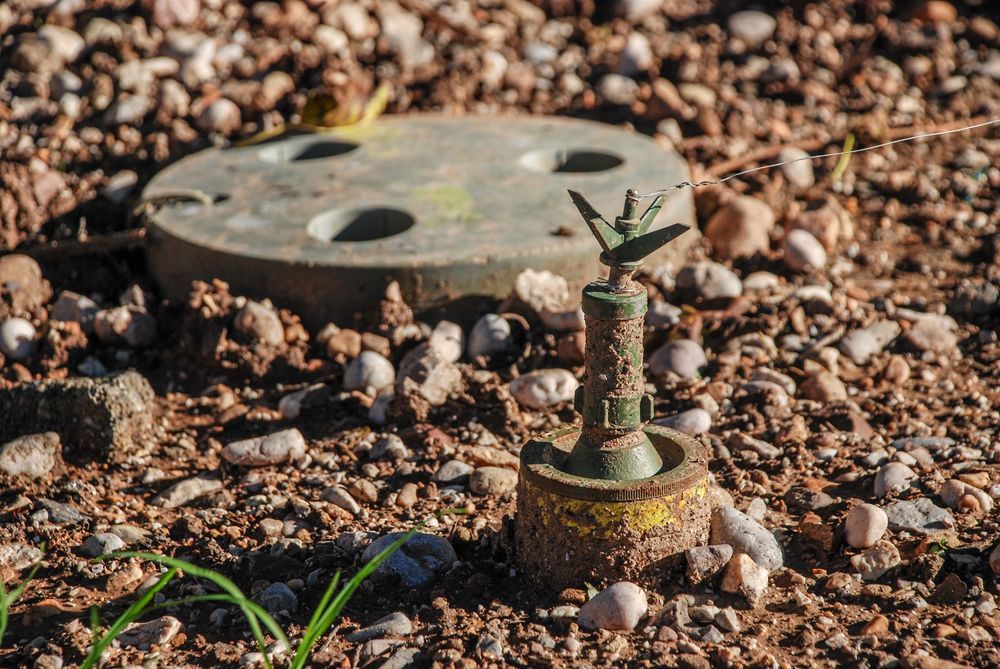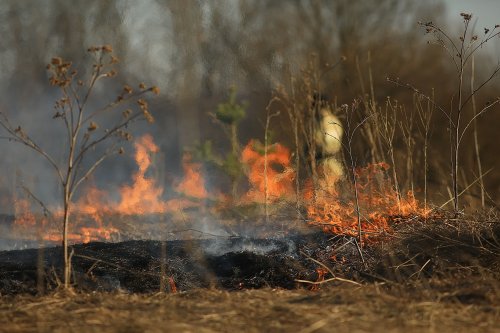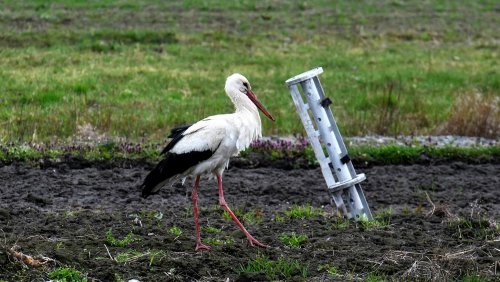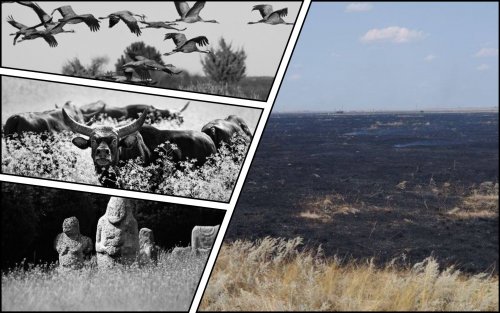Specialists have warned that the wounds inflicted by the Russian army on the forests, steppes and waters of Ukraine will remain for a decade, and the legacy of the war will continue to threaten after the guns die down.
About how the war destroys the nature of Ukraine, says the material BBC.
Since the beginning of the war, Russian troops have been shelling oil depots and large industrial facilities throughout Ukraine. Heavy metals from shells and military equipment enter the soil and groundwater. Fires in forests and steppes destroy the natural environment of rare species.
War mercilessly destroys all nature - air, water, earth, plants and animals suffer.
Seizures and shelling of nuclear power plants, the placement of equipment there and explosions of ammunition are fraught with a man-made disaster that will make the surrounding areas unsuitable for human life.
According to the head of the climate department of the NGO "Ecodia" Yevgenia Zasiadko, all these actions are crimes against the environment, or ecocides.
"This is not only about the harm to nature, but also about people. This war can lead to many deaths in the future due to water and soil pollution, due to mining," the expert said.
Since intentional harm to the natural environment is considered a war crime in international law, Zasyadko is confident that Russia will be held accountable for this.
Minister of Environmental Protection Ruslan Strilets said that Ukraine could become the first country in the world to receive reparations for crimes against the environment.
According to him, the damage caused by Russia to the environment of Ukraine amounts to hundreds of billions of hryvnias. Together with environmentalists, the ministry carefully collects the evidence base of crimes.

Toxic air
Shelling and occupation increase the risk of releases of toxic waste from industrial enterprises in Ukraine. The largest number of them is in the east of the country, where there are active hostilities.
They pollute the atmospheric air and chemicals released during the explosion of bombs and rockets. Their fragments, falling into the ground, poison it and groundwater.
Scarred earth
Thousands of Russian tanks and armored vehicles are polluting the ground with fuels and lubricants, and those that have been burned continue to cause damage like scrap.
“When the war is over, recycling this amount of scrap will be another challenge. Recycling military scrap is a more complex and time-consuming process,” Zasiadko said, adding that Ukraine had problems with waste even before the war.
This is carcinogenic garbage, and while it remains on the ground, it poisons the environment with heavy metals that enter the groundwater.
In areas of active hostilities, the quality of drinking water in wells has deteriorated significantly, the expert explained.
The war-ravaged land hides other dangers. One of the biggest is the remnants of ammunition and the mining of natural areas.
Today, according to the UN, Ukraine is one of the most mined countries in the world. More than 80 thousand square kilometers of the territory of Ukraine need to be cleared of mines and explosive residues.

Problems with access to drinking water
Due to the war and its consequences in Ukraine, there may be a problem with drinking water and desertification.
"Even before the war, Ukraine was suffering from an insufficient amount of water and its poor quality," said Inna Hoch, an expert in the Water direction at WWF-Ukraine.
In terms of drinking water supply, Ukraine occupied the 125th position out of 180 countries of the world. First of all, the eastern and southern regions, lying in the basin of the Seversky Donets, the Southern Bug, in the Sea of u200bu200bAzov and the Crimea, experienced a shortage.
The state of the freshwater resources was heading towards "very high risk" status, the researcher says. Because of the war, this situation will worsen.
The shelling of treatment facilities such as Vasilkov, the destruction of water pipes and other water infrastructure, the inability to quickly repair it, will affect the quality and quantity of water.
The next step in this chain is the spread of infectious diseases, Hotch added.
Protected areas
"The war affected about a third of the entire natural reserve fund of Ukraine," said Taras Yamelintsa, an expert in the "Rare species" direction at WWF-Ukraine.
According to him, today several dozen natural and biosphere reserves, national and regional natural parks are suffering significant damage as a result of Russian aggression.
About 200 territories of the lands of the Emerald Network are under the threat of destruction. These are protected areas defined by the Berne Convention.
There is a lot of unexploded ordnance left in the forests in Chernihiv, Sumy, Luhansk, Donetsk and Kherson regions, says Yamelynets. This is a danger to people and wild animals for many years.
Disturbed soil and burned forests are quickly overgrown with alien invasive species.
At the same time, rare animal species are threatened not so much by the death of some individuals, but by the destruction or change in their ranges and migration corridors, the researchers explain.

Also under threat were 30,000 pairs of white storks and almost 500 pairs of rare black storks arriving at this time in Ukraine for nesting.
The war grossly interfered with the ecosystem of the Black Sea. The Russian military replaced part of its water area, firing powerful projectiles from surface and submarine boats.
Recently, dead dolphins were found on the shores of the Tuzlovsky Limany National Natural Park in the Odessa region.
The Russian military uses sonar at high decibel levels, which damages the dolphins' hearing. According to ecologist Ivan Rusev, it is currently impossible to estimate how many dead animals there may be in the sea.
According to environmentalists, the future environment directly depends on how Ukrainians will rebuild the country after the war.
Emissions may increase due to production of building materials and refurbishment. Part of the natural areas can be given for construction to restore settlements, new dumps have already appeared from the remains of destroyed buildings and "graveyards of equipment."





